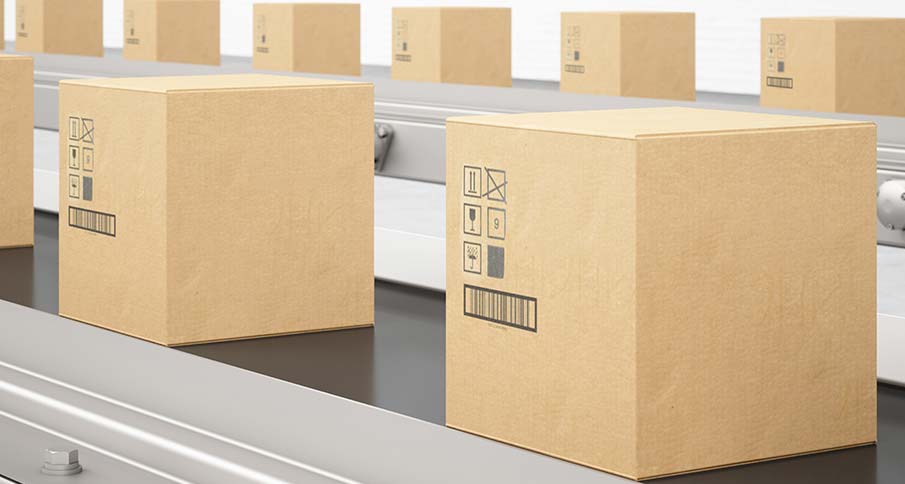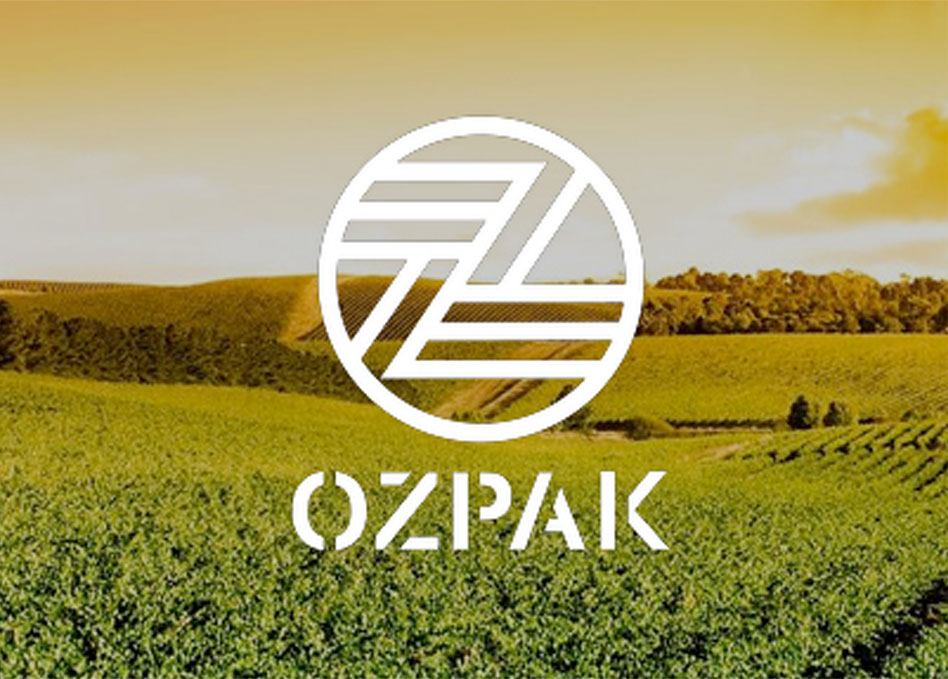Print compliant shipper barcodes on your cartons and cases. Our carton barcodes factsheet has everything you need to know about using carton GTINs.
An ITF-14 barcode, also known as a Carton GTIN, is a 14-digit barcode that goes on the outer shipping carton or case of your retail products. An ITF-14 barcode only encodes a GTIN and is not intended to be scanned at retail POS. Each carton should contain a set number of your retail products (e.g. 120 bags of chips).
Retailers scan the ITF-14 barcode on each carton when it arrives at their warehouse or distribution centre. The ITF-14 barcode tells them how many units are contained in each shipping carton (e.g. 120 bags of chips). This information is recorded in their inventory management system so that they can keep track of stock.

Carton Barcode Retailer Distribution Centre
If you’re selling the whole carton directly to consumers at the wholesale point of sale, you need to add the EAN-13 barcode to the outer carton as well as the ITF-14 barcode to your carton label.

Carton Barcode Whole Sale POS
To work out which number to use, consider if the inner or outer carton will be sold at retail point-of-sale. If yes, assign a GTIN-13 or GTIN-12 (if selling in North America). If not, assign a GTIN-13 or GTIN-14.
The GTIN-14 is only for groupings of the same items. In other words, all products contained in the carton/case are identical.
The ITF-14 only encodes the GTIN and is better suited for printing onto corrugated cardboard for trade items.
A GS1-128 barcode must be used if you’re encoding the GTIN along with additional information, such as use-by dates and batch numbers.
Either an ITF-14 barcode or a GS1-128 barcode. These barcodes are not intended for point-of-sale scanning. For point-of-sale scanning a EAN-13 can be used.
For scanning in a General Distribution (automated) Scanning environment, the minimum bar height for both the ITF-14 and the GS1-128 barcode is 32mm. For all other scanning environments, the bar height should be printed as high as possible. In no cases shall the bar height be less than 13mm. While 13mm is the minimum height for GS1-128 barcodes not being scanned in an automated scanning environment, every effort should be made to increase the bar height to as close to 32mm as possible.
The size of the GS1-128 barcode depends on: • the X-dimension (module width) chosen • the number of characters encoded • the number of non-numeric characters in the data For GS1-128 barcodes that are to be scanned in a General Distribution (automated) Scanning environment, the X-dimension range is 0.495mm to 1.02mm (magnifications between 48.7% and 100%). For other scanning environments, the X-dimension range is 0.25mm to 0.495mm (magnifications between 25% and 48.7%).
The specified magnification (X-dimension) range for ITF-14 barcodes that are to be scanned in a General Distribution (automated) Scanning environment is between 48.7% and 100% (X-dimension 0.495mm – 1.02mm). For other scanning environments the allowable magnification range is between 25% and 48.7% (X-dimension 0.250mm and 0.495mm). For all scanning environments printing at the higher end of the magnification range is recommended. Regardless of the scanning environment, ITF-14 barcodes with a magnification less than 62.5% (X-dimension 0.64mm) should not be printed directly onto corrugate fibreboard.
The sizing of a label depends on the size of the barcode, the amount of data required to be displayed on the label and the regulatory standards of the supply chain. As such the label size will vary with different GTIN applications.
The length of the GS1-128 barcode must never exceed 165mm in length, including the Quiet Zones. When concatenating data strings, the maximum number of characters in the GS1-128 barcode must not exceed 48 characters. This includes Function 1 Symbol Character (FNC1) when used as a field separator, but excludes auxiliary characters (see table below) and the Symbol Check Character (Modulo 103).
It depends how you are printing the carton barcode. For ITF-14 barcodes printed on label, GS1 Australia requires at least 1 barcode per trade unit and the Australian grocery industry requires at least 2.
For ITF-14 barcodes printed directly onto board, GS1 Australia requires at least 2 per trade unit. The Australian grocery industry prefers 6 per trade unit as a minimum.
Whilst the absolute minimum requirement for non-retail trade items is one barcode, for efficiency of scanning it is highly recommended that a minimum of two symbols be printed/applied to the sides of the carton.
The lower edge of the vertical bars (not the bottom of the surrounding horizontal bearer bar of an ITF-14 barcode) are exactly 32mm from the lower edge of the base of the carton. No part of the barcode (including the bearer bars on an ITF-14 barcode, and Quiet Zones is closer than 19mm to any vertical edge. (Please check with your Trading Partners as some Australian Retailers require 4 barcodes on each carton).
How do you ensure reliable, high quality carton labelling? Australian wine packaging company Ozpak uses a label print & apply machine for consistent positioning onto cartons. Learn Ozpak is benefitting from better consistency and quality of carton labels.

Whilst we attempt to update this page as changes occur we do not guarantee its accuracy and recommend that you contact GS1 Australia for the most up to date advice.